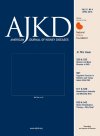Dietary Management of Hyperphosphatemia
In their article, St. Peter et al1 provide an excellent analysis of the high cost of phosphate binders in patients with chronic kidney disease despite the lack of conclusive evidence supporting improvement in important clinical end points. Exceeding $1.5 billion in 2015 for Medicare Part D, the high cost of phosphate binders reinforces the need to explore alternate cost-effective ways to reduce serum phosphate levels. As alluded to by the authors, this is especially relevant because many patients are nonadherent to phosphate-binder treatment, with a systematic review suggesting that 52.5% of hemodialysis patients were nonadherent to phosphate-binder treatment, with those with larger pill burdens having higher rates of nonadherence.



